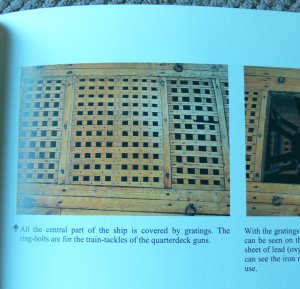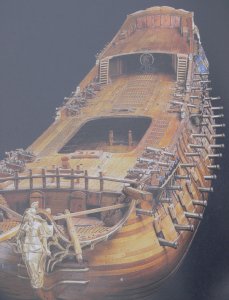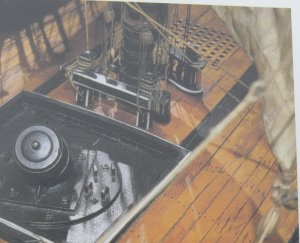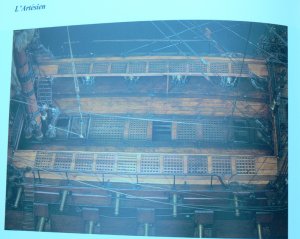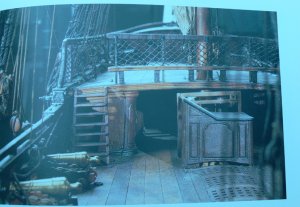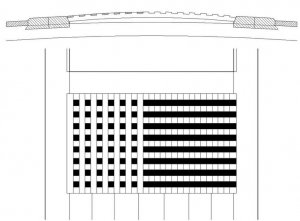Looking through my copy of "Historic Ship Models of the Musee de la Marine Collection" by Jean Boudriot, Collection Archeologie Navale Francaise, confirms what I said about grates on French vessels being flush with the deck. These are photos of historic models built by the ship builders who built the actual vessels, so they should be reliable. I attach some photos of French built 64 gun ship, a 74 gun ship and others.
Your photo of Hermoine with the slightly raised hatch, perhaps this replica was "improved" slightly from the original? It is a replica is it not, not the original vessel, so perhaps they learned from their earlier mistakes. The same with modern draughts/monographs, can we be certain that they exactly replicate the original. Using National Maritime Museum original draughts we are fortunate to have original work/sources, looking at page 148/149 in the book , "History of the French Frigate", which shows a comparisom between French design, as captured, and the same frigate once she has been taken into British service, draughts of the same vessel, before and after, shows grates level with the deck in the "as captured" and raised in the "after refit into British service".
Bob
Your photo of Hermoine with the slightly raised hatch, perhaps this replica was "improved" slightly from the original? It is a replica is it not, not the original vessel, so perhaps they learned from their earlier mistakes. The same with modern draughts/monographs, can we be certain that they exactly replicate the original. Using National Maritime Museum original draughts we are fortunate to have original work/sources, looking at page 148/149 in the book , "History of the French Frigate", which shows a comparisom between French design, as captured, and the same frigate once she has been taken into British service, draughts of the same vessel, before and after, shows grates level with the deck in the "as captured" and raised in the "after refit into British service".
Bob



